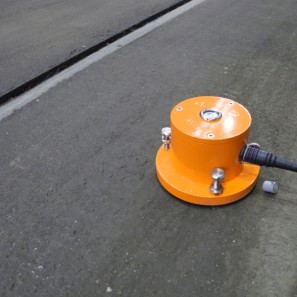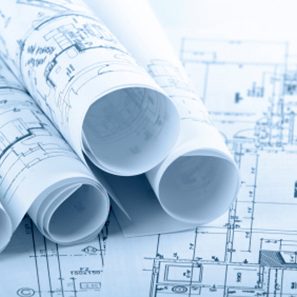Reverberation time
In general, the reverberation time is calculated and measured on the basis DIN EN ISO 3382.
Usually, for block-shaped rooms with room dimensions differing less than factor three from each other, the constraints for the development of a diffuse sound field are fulfilled. A diffuse sound field is present, if at every location, the sound is inciding from every direction with identical intensity (constant energy density independent of location).
The diminishment of the sound pressure level in the diffuse sound field can be achieved by sound absorbing installations at an arbitrary location in the sound field. Thus, the spectral reverberation time is often optimized by statistical calculation. Thereby, the requirements for the spectral reverberation time defined in DIN 18041 are determined by the utilization and the size of the room.
Sound decay curve
Rooms with longitudinal and lateral extension greater than the triple ceiling height are called as flat rooms and require the determination of the sound decay curve (diminishment of sound pressure level for doubling of distance) according to DIN EN ISO 14257 as well as VDI 3760.
The diminishment of the sound pressure level in such rooms can be achieved by targeted allocation of sound absorbing installations at reflecting room surfaces. A digital room model allows to efficiently predict and optimize the acoustic effectiveness of acoustic installations.
Speech intelligibility
The evaluation of the speech intelligibility in multipurpose halls and concert halls is often carried out on the basis of the speech intelligibility index C50 (C80) depending on location. It describes the ratio of the inciding sound energy for a defined time interval and the total inciding sound energy. The index is determined by means of the impulse response of the room depending on location.
A further criterion to evaluate the speech intelligibility is the so-called speech transmission index (STI). The STI characterizes the quality of the transmission of speech along a transmission line from the source to the receiver. Therefore, it is especially applied with respect to the speech intelligibility of electroacoustic sound systems.
In combination with a digital room model, the calculation of the STI can be carried out for a multitude of source positions and receiver positions. Together with the measurement of the reverberation time, the measurement of the STI is regulated in DIN EN ISO 3382.
To evaluate the efficiency of sound masking systems, additional specific criteria are applied.




